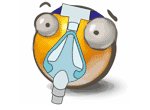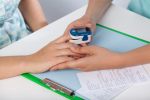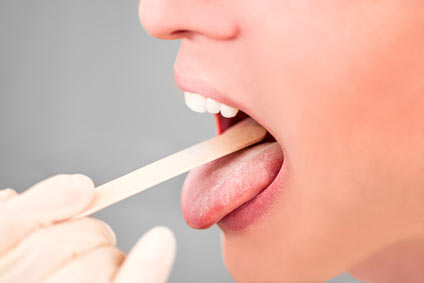CPAP Claustrophobia
How can you treat claustrophobia from sleep apnea mask?

If you are afraid to sleep with your CPAP mask on, or you have feelings of claustrophobia, panic attacks or anxiety with your CPAP, don't get discouraged because many people have this problem when they start the CPAP treatment.
This article will help you to eliminate or diminish those feelings of anxiety from using that annoying CPAP mask during sleep.
What is CPAP Claustrophobia?
When you are at the beginning of your CPAP treatment, in your body's struggle to breathe every night it's producing large amounts of stress hormones - adrenaline - that will circulate through your body.
That's why for many people it takes some nights of good sleep on CPAP - without apnea episodes - to clear all the stress hormones out of your body.
After you get used to CPAP, you'll be amazed at how much calmer you are going to feel and the fear will become a thing of the past.
The question is...How to get to the point where you can wear the mask all night to clear the adrenaline from your body? We'll speak about this in a moment.
Causes and Risk Factors for CPAP Claustrophobia
The next questions will help you to identify the root problems of your CPAP anxiety:
What kind of fears you have when you try to sleep with the CPAP mask?
- Is it the idea of having something on your face?
- Do you have fear of CPAP mask from a previous experience?
- Are you worried about strangulation from the head strap by your neck?
- Is it because you can't see far?
- Is the weight of the CPAP mask bother you?
- Is it because you tried on a CPAP mask and you coldn't breathe through it, sending you in a panic?
Tips to eliminate CPAP claustrophobia
Below are some ideas that can help you diminish claustrophobia and anxiety when you use a CPAP mask:
1. Use CPAP Mask with protection against asphyxiation
When you wear a CPAP full face mask, how can you eliminate the carbon dioxide when you breathe out? The mask should be vented in order to allow the carbon dioxide to escape.
With the most CPAP masks you can actually breathe through the mask even when it is not running, because the mask is vented. Those exhaust vents are design to save your life if the power goes off, and your CPAP machine doesn't deliver the vital air.
But what happens if the exhaust vents get somehow blocked while you sleep? Your body's reflexes will help you by:
In this video you can see the design of ResMed Mirage Quattro mask with built-in exhaust vents:
2. CPAP is offering you the air that you need
When you sleep with your CPAP machine and mask, you have to understand that the machine is actually pushing air into you.
So, you may feel claustrophobic at first, but the CPAP machine is really giving you air to breathe!
3. It's like brushing your teeth every day
The sooner you'll use the CPAP machine - rather than been afraid of it - the better it works. Let the time passing by without starting the CPAP therapy... and it will be more difficult to overcome your fear.
4. Wear the CPAP mask while awake
Attach the mask to the CPAP device, and switch the unit "ON".
Practice breathing through the mask for one hour while watching TV, reading or performing some other sedentary activity.
5. Positive attitude
Maybe you don't realize...but the CPAP machine and mask will be with you for the rest of your life, and it will improve your quality of life tremendously.
Once you build this positive mantra into your life, everything will be easier.
6. Have patience with your CPAP therapy
Please don't get discouraged if it doesn't work, because it takes some time to getting used to all CPAP new thing.
Just expect that it will take a litle time to become comfortable with CPAP, and then, one day, you will realize that you slept with the mask on, like many others.
If you have issues with your CPAP, please read CPAP problems or CPAP mask problems.
7. Mask type is important to help your CPAP claustrophobia
The full face masks are the main causes for CPAP claustrophobia.
If this is the cause for you, you may prefer nasal masks or nasal pillows because you know you could always breathe by opening your mouth.
However, they only works for treating sleep apnea if you can prevent mouth breathing when you sleep.
It can be a problem if you breathe through your mouth, because of the dry mouth issues that can appear after you wake up.
If you do wear a full face mask because you cannot avoid mouth breathing, examine the mask carefully and you will find the air valve which will always let the fresh air into the mask if the CPAP is off.
If the CPAP machine is on, you will receive air from the machine instead.
How to get used having the CPAP mask on your face?

Try wearing the mask during the day when doing some quiet activity like watching TV, listening to music, or reading. When you are upright and fully in control you know you can remove the mask easily any time you want.
While you are awake, and have the CPAP mask on, you may still have the panic attacks. But you can calm down if you know how to relax with it.
The secret is breathing relaxation technique which will control the feelings of CPAP claustrophobia:
- take a deep breathe and hold it, and silent count to 4.
- then breathe out very slowly, while counting to 4.
- then pause breathing while counting to 4.
- then breathe in slowly while counting to 4.
- then repeat the process by holding the air and counting to 4.
If you can, use the mask and the machine, particularly if it's a full face mask (because even though there is a passive air valve that will always let fresh air into a full face mask if the machine is not on, it gets stuffy inside a mask without the machine!).
After doing this about 12 times, the claustrophobic feeling is usually gone.
Do you really benefit from CPAP ramp feature?
Do you have the CPAP ramp feature turned on? If you have CPAP claustrophobia, the ramp function can contribute to the feeling of panic.
The ramp is meant to help you get used to the pressure by starting low, climbing slowly to the set pressure, hopefully when you're already asleep. But, it may work against you because at very low pressures you may feel less air and feel more panicky.
You may need to experiment with turning the ramp feature down, turning the starting pressure of the ramp up, or foregoing the ramp feature altogether (most of us don't use the ramp after the first week or so because it seems like we're NOT getting enough air at very low pressures).
Gradually increase the time spent with your mask
As you are wearing the mask during the day to get used to it, gradually increase the amount of time you wear the mask.
The idea is to get very comfortable in the mask and learn to trust that you won't suffocate in it. You won't, you know that, but you have to convince your body, too.
Here is how to increase gradually the amount of time wearing the mask:
- Wear the mask at home while awake for one hour each day.
- Use the CPAP during scheduled one hour naps at home.
- Use CPAP during initial 3-4 hours of nocturnal sleep.
- Use CPAP through an entire night of sleep.
- Remember to advance by one step after each five days, once the step can be carried out without anxiety.
Home › CPAP Mask Problems › CPAP Claustrophobia







